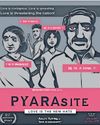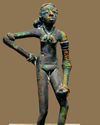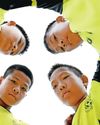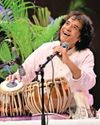
The introduction of anaesthesia in 1846 revolutionised surgery and pain management. The doctors you often see rushing to emergencies on television shows are likely anaesthetists. Yet, anaesthesiology is a poorly understood speciality, with many people believing that an anaesthetist simply leaves the operating theatre after administering anaesthesia. In reality, the anaesthetist is with the patient before, during and after surgery. And, contrary to cinematic depictions, one cannot sedate a person by placing a chloroform-soaked rag over her nose.
Dr Mamta Harjai, assistant professor in the department of anaesthesia at Ram Manohar Lohia Institute of Medical Sciences, Lucknow, completed her master’s at King George’s Medical University, Lucknow. When she is not in the operating theatre, she enjoys reading crime thrillers and practising yoga.
A customised expertise: Different patients require different types of anaesthesia, broadly categorised as general, local, regional and spinal. (Local anaesthesia impacts only a small part of the body, while regional anaesthesia covers a larger area, such as an arm. Spinal and epidural anaesthesia are types of regional anaesthesia.) There are further classifications, such as block anaesthesia, which numbs a block of nerves.
This story is from the November 03, 2024 edition of THE WEEK India.
Start your 7-day Magzter GOLD free trial to access thousands of curated premium stories, and 9,000+ magazines and newspapers.
Already a subscriber ? Sign In
This story is from the November 03, 2024 edition of THE WEEK India.
Start your 7-day Magzter GOLD free trial to access thousands of curated premium stories, and 9,000+ magazines and newspapers.
Already a subscriber? Sign In

POSTERS OF PROTEST
Appupen is a cartoonist who has published a few graphic novels, the latest being Dream Machine, about how AI can be a great 1 tool for an! authoritarian regime.

CLASH OF THE CIVILISATION
Even as the discovery of the Indus Valley Civilisation completes a century, some key aspects of this ancient culture remain mysterious, including its script. While the controversy over whether it was disrupted by an Aryan invasion may now be discredited, the debate over Indus ancestry and current links continues

A PROVEN PATHWAY TO PEACE
Low-cost, easy to implement, immediate results, and scientifically verified.

FOOTBALL GIVES THEM A KICK
For the children of Manipur and Mizoram, the great game is a way to a prosperous future

BATTLE FOR TOMORROW
Over the past decade, much has been said about India's potential as a leading global power.

THE TONGUE THAT TURNED
Why Greek survived while Latin and Sanskrit declined

USTAD ZAKIR HUSSAIN 1951-2024: HIS MUSIC WAS THERAPY TO THE WORLD
Flautist and Grammy co-winner Rakesh Chaurasia remembers the maestro

The magic of indigo
I really can't imagine why more of us don't throng Goa each December for the Serendipity Arts Festival alone. The festival, in its ninth year now, has the entire Panjim town celebrating.

NEW YEAR.NEW HOPE
EQUITY MARKETS HAVE TURNED VOLATILE OF LATE. WHAT TO EXPECT IN THE NEW YEAR

Seeking middle ground in Middle East
The collapse of assumptions is like the end of the world-or worldview. We assumed conwith the 20th century. But wars in Russia-Ukraine, Gaza, Yemen, Sudan, Somalia and Lebanon prove us wrong. Western defence officials now raise the nuclear threat level.